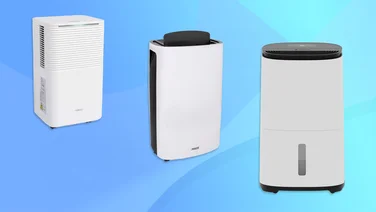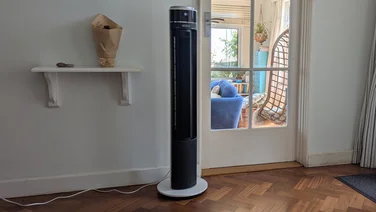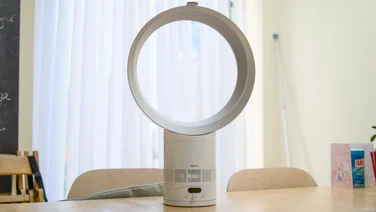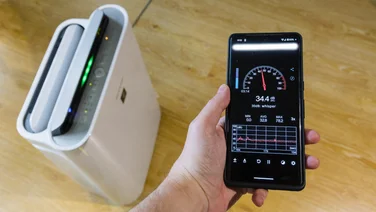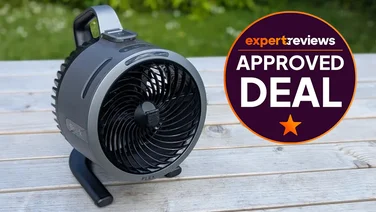To help us provide you with free impartial advice, we may earn a commission if you buy through links on our site. Learn more

When you think of humidity you’ll most likely think of warm, balmy climates. But excess moisture in the air can actually affect our homes all year round, regardless of the weather. In summer, using one of the best dehumidifiers can stop rooms feeling stuffy and help you feel cooler.
A number of different things can cause the humidity levels in your home to rocket. From a hot shower with the windows closed to cooking in a steamy kitchen – you might have noticed visible signs of high humidity without even realising it. These telltale symptoms include condensation on windows and cold surfaces as well as mould, mildew and dampness on walls and ceilings.
While experts recommend that humidity levels should ideally fall somewhere between 30% and 50%, anything over 50% humidity is where problems start. You can check the humidity levels in your home and in certain rooms by using a hygrometer or indoor humidity monitor for a precise reading. Whereas this simple ice cube test can also highlight if there’s too much moisture in the air.
Simply take a glass of water and place four or five ice cubes in it, then leave the glass in the room where you want to check the humidity level. Wait for around ten minutes before checking it. If there’s condensation on the outside of the glass, that means the room has a relatively high humidity level and there’s too much moisture in the air. If there’s no condensation on the glass at all, this could indicate insufficient moisture in the air.

If the humidity levels are above 50% you might want to consider buying a dehumidifier. But what exactly does one do? And can it help to cool a room? Keep reading to find out.
What does a dehumidifier do?
A dehumidifier is an appliance that removes excess moisture from the air to maintain a consistent and comfortable level of humidity. There are typically two different types of dehumidifiers to choose from – refrigerant/compressor and desiccant. And as you might be able to tell from the name, the refrigerant/compressor variety is often touted as the best option for warmer environments and weather.How come? Well, this is because a refrigerant or compressor dehumidifier draws the air in through a filter and over cold coils. The excess moisture in the air then condenses on the coils before dripping into its attached water tank. As the air in the room needs to be warmer than the cold coils within it, this kind of dehumidifier works particularly well in warm and stuffy rooms.
But does it cool down the room it’s used in? Well, even though the room may feel cooler as a result, it doesn’t actually have any effect on the overall temperature.
How does a dehumidifier produce a “cooling effect”?
Even though a dehumidifier won’t lower the temperature of a room, it can make us feel a bit cooler. This is because lowering the humidity of any space can make it feel much more comfortable to be in.
And during the warmer, summer months, a dehumidifier can even affect the moisture that radiates from our bodies – most notably sweat. The appliance causes this moisture to evaporate more quickly, which stops us from feeling clammy or particularly sweaty during a spell of warm weather.

So, you may feel cooler, but a dehumidifier gives a “cooling effect” to the air by making it less humid. Excess moisture in the air – which a dehumidifier removes – can make the air quality quite poor, which in turn makes it feel stuffy and warmer than it actually is.
READ NEXT: Best air purifiers
What problems can a dehumidifier solve?
By removing excess moisture from the air, a dehumidifier can help with a number of different issues. If you’ve noticed condensation on your windows, whether that be in the warmer or colder weather, this is a visible sign that there is too much moisture in your home.
If you struggle to dry your laundry, especially during the colder months and you don’t have a tumble dryer, you might resort to drying damp clothes on your radiators. However, this can be problematic. Not only does drying your wet laundry on a radiator stop it from working effectively, when your laundry does start drying, it releases more moisture into the air which can further exacerbate issues like dampness, condensation and mould.
READ NEXT: Best dehumidifiers for drying clothes
Which dehumidifier is right for me?
Depending on the size of the area, as well as your budget (and whether the room in question is on the warmer or cooler side), there are a number of different brands and dehumidifiers to consider. Confused? Don’t be. Thankfully we’ve done all the hard work for you with our tried and tested list of the best dehumidifiers available to buy.
READ NEXT: What does a dehumidifier do?
What should I use to cool a room instead?
Instead of relying on a dehumidifier to cool a room in your home, there are several other things you can do to lower the temperature – and these can be used alongside a dehumidifier to help make a previously overheated room much more enjoyable to be in.
If it’s feeling particularly warm and clammy in your home, something as simple as keeping the sun out by closing blinds and curtains during the day, as well as keeping internal doors open to let the air circulate more freely, should offer some respite from the heat. You may also want to consider investing in a portable air conditioning unit or a number of fans – either of the desk, tower or pedestal variety – to create gentle air currents that help cool down a room.


